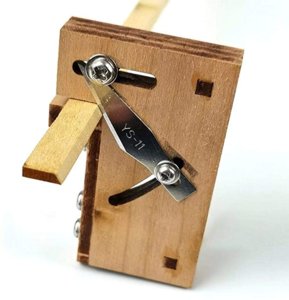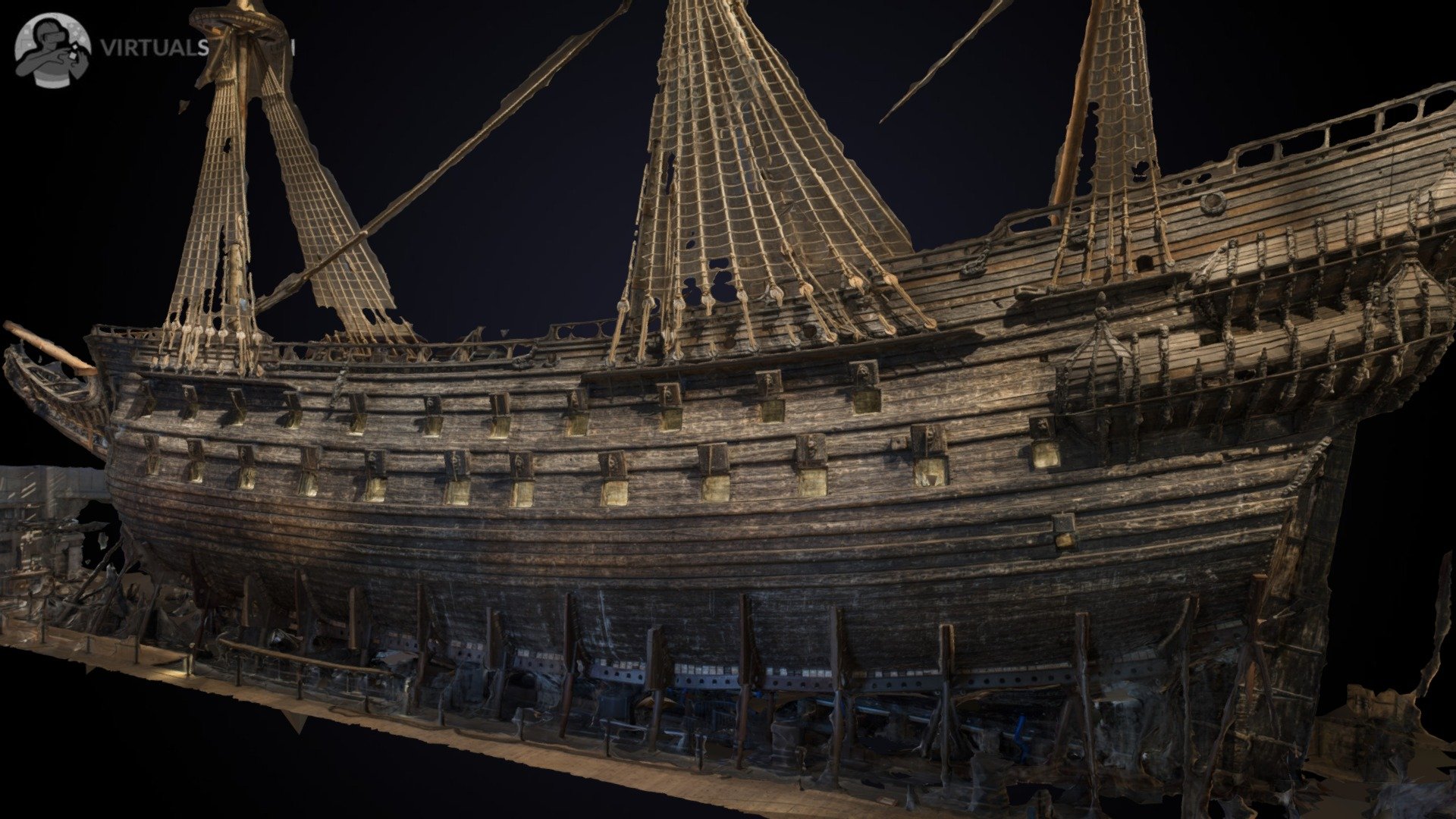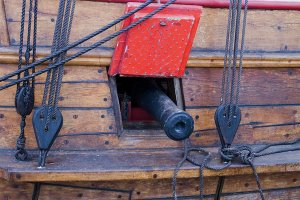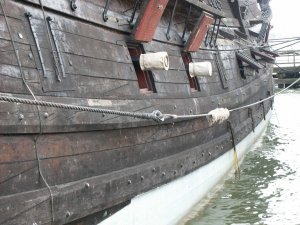Dear Model Shipbuilding Friends
I trust that you are all well and keeping safe.
Normally, I try to post weekly updates when a certain “phase” (in my mind) of the build process has been completed. This time, though, I knew that (in my case) a week was to impossible to complete the next part. The reason -
PLANKING!!!
From the outset of the build this was the part that I dreaded the most. I had never done anything of the kind before and to worsen matters, the Batavia requires only ONE layer of planking. Get it wrong the first time and there is no chance of hiding any imperfections below a second layer. The thought of “measure twice, cut once” would be very important as did the words of one of the guru’s on the Dutch site - “KEEP CALM”! So, I told myself that if I could only lay one plank a day - so be it!
What makes the Dutch ships even more tricky are the multiple curvatures in one plank - this would require not only lateral bending, but also vertical shaping.
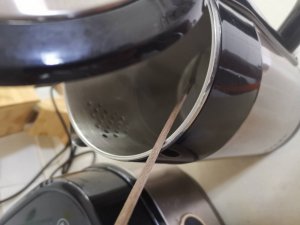
So without further ado, the spare kettle was boiled and strip by strip the wood was soaked for about 5 minutes.
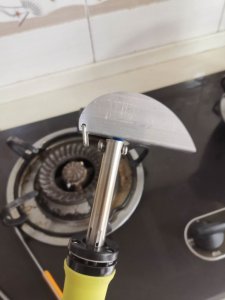
While the wood was soaking, the plank bender from Kolderstok was brought to operating temperature. And let me assure you - this is the best 45 Euros that I have ever spent. The plank bender is in essence a soldering iron with two fittings for drying and shaping planks. The rounded headpiece is shown above . As soon as it has become sufficiently hot, simply insert in the one end of the plank into the little ring attached to the head and gently bend the plank around the head. As soon as the plank is removed, it has its required shape, and is dry, ready to be installed.
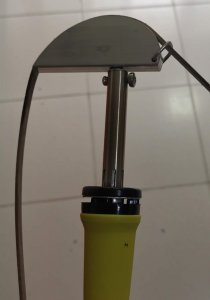
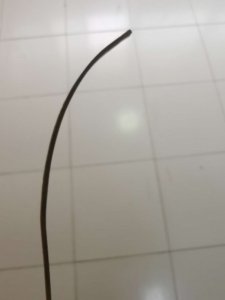
Plank ready for installation. The exact curvature, how sharp the angle must be, etc. are all determined by the user.
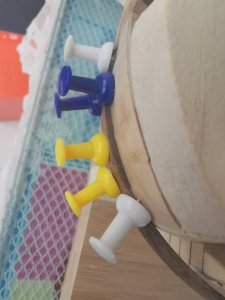
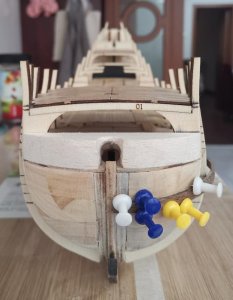
Plenty of push pins were used to secure the plank while drying. At this point I really appreciated all the hard work that went into the basswood filler block as I felt much more at ease that once driven home, the pushpins were not going anywhere.
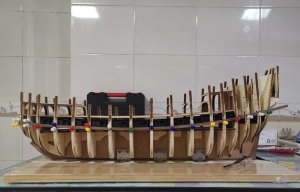
And the first plank is laid.
The vertical bending is a LOT more difficult. The plank is again thoroughly brushed with cold or lukewarm water until pliable, bent by hand into the correct curvature and secured with the help of numerous push pins attached to the bulkheads. Then it was a case of walking away and waiting for the plank to dry completely into its correct shape and before any gluing could occur. Once finally glued, it was again a case of walking away and waiting at least 4 hours for the glue to dry. Yes, if there was a second layer of planks, I could have used CA which would have hurried matters along greatly, but seeing that I have NEVER been able to apply CA neatly, this was not an option.
So for two weeks that was my life. Most days I laid two planks (one on either side), some days three and even four on one momentous occasion!

And that brings us to the point where I am now - fourteen days of work, 15 minutes of posting! 21 planks are laid. What the strory does not tell is all the headscratching, refitting, wrongly cut planks especially as I was trying to figure out HOW and WHERE the "verlore gangen" (Dutch) - literally translated as "Lost planks" (No, not dropped planks) should go. Now I am as low down on the hull as I can comfortably work on my building board. To go further, I will have to fabricate some sort of "jig" that will allow me to turn the ship upside down. So, I have decided to continue planking from the top wale upwards for the time being. Here are the progress shots.
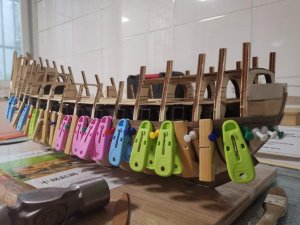
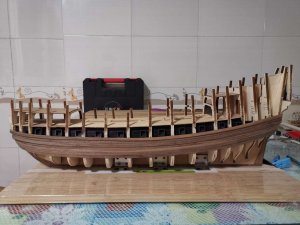
Port side - lightly sanded.
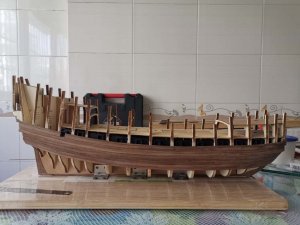
Starboard side - not sanded at all.
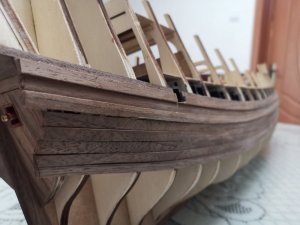
Rear - Quarter view starboard side.
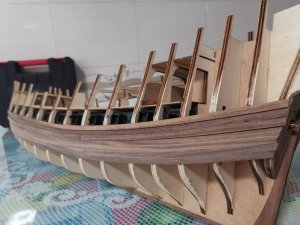
Rear-Quarter view port side.
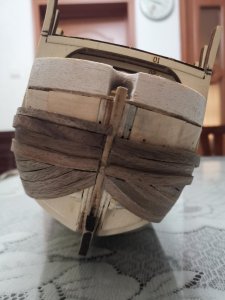
Bow symmetry. The little gaps will hopefully disappear after a thorough sanding - remember ... no filler can be used!
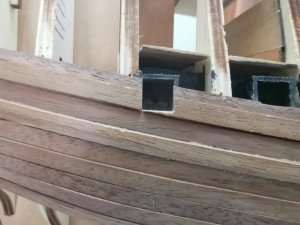
First gunport opened up. This presents its own challenge and will take me a long time to do the way that I want it done.
So please bear with me if I don't post as many updates as before, This to me is the crucial part of the build and one that requires all of my concentration. I still follow the forum whenever I take a break and I wish you everything of the best with all of your builds and projects.
Thank you for visiting my log and for following - it is greatly appreciated. And remember - comments AND criticism are always welcome!
Kind regards - Heinrich







